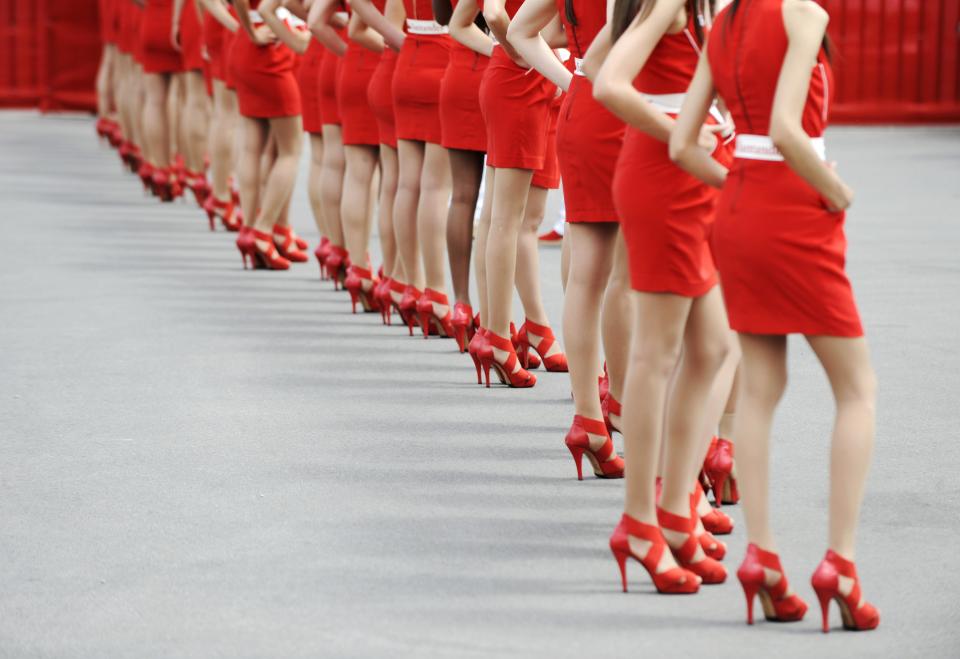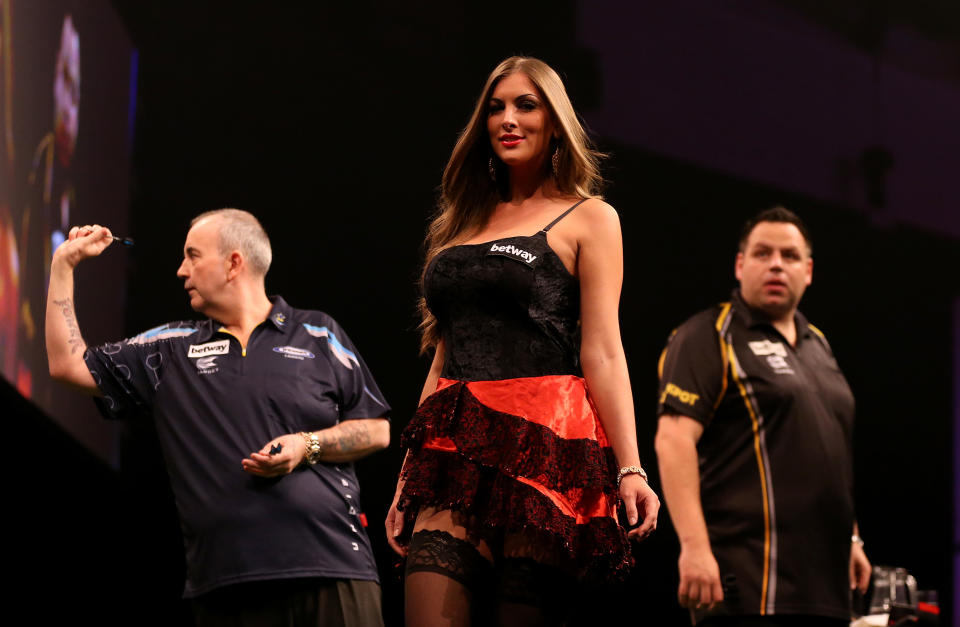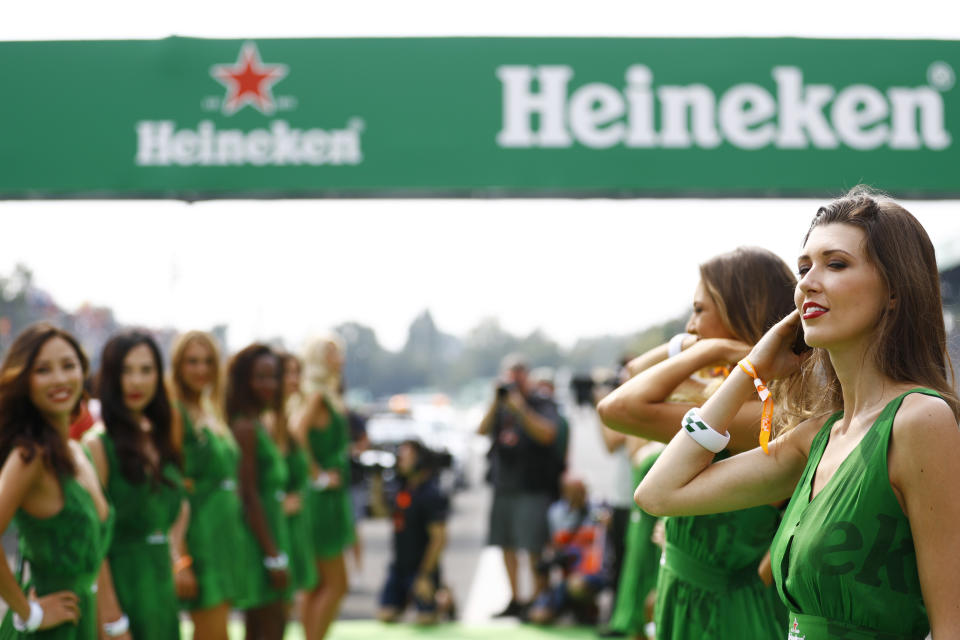Formula One: F1 chooses Graham Hill over Benny Hill by dropping grid girls - or does it?

Farewell, then, F1’s grid girls. At times you titillated, but mostly you stood around, holding a numbered stick and getting sunburned.
And, presumably, there was always the risk of being groped by the champagne-chugging VIPs who prowl permatanned among the cars while Martin Brundle is improvising another grid walk for TV viewers.
I know a couple of women who’ve done grid girl duty – motorbike grids, not F1, if that makes a difference – and they enjoyed the experience. They got to meet some cool people, got up close to the machinery, got to be sexy stars (sort of) for a little while.
It was a whole lot of fun, and they got paid for it too. Well, one of them did.
And fair enough – from the 1950s until the 1980s, British families would sit down to watch Miss World on prime-time BBC1, because the beauty pageant was still viewed as being a pretty wholesome affair.
READ MORE: Deadline day LIVE – all the rumours and done deals
READ MORE: The biggest deals sealed on deadline day
But, at some point, the whole pageant thing started to feel a tad sleazy and, just as the boobs-out humour of Benny Hill fell out of favour, so did the whole idea of bikini parades and glamour girls as family fun.
The beauty business carried on, of course, attracting the attentions of people as upstanding as the present President of the United States of America, but it all started to feel, at best, old-fashioned, and at worst exploitative. Insert all the old arguments here, they still apply.
Fast-forward (but hit pause for a long look at Miss Brazil; how creepy does that sound?) to 2018 and the world of sport is rocked when the decision to do away with glamour gals is finally taken… by darts bosses.

Darts bosses. Not F1 bosses, not Moto GP bosses, not even boxing bosses. Darts bosses.
Darts, for so long the proof that even an overweight alcoholic with no teeth and a whimpering liver could conquer the world, went through the mill in the 1990s, and was forced to reinvent itself as a more family-friendly pastime. The viewers returned.
Darts’ version of grid girls, the ‘walk-on girls’, finally bit the dust last week, following ‘feedback from broadcasters’. Viewers and, more likely, advertisers, no longer valued a bit of token totty between bouts of arrow chucking.
How did F1, the self-proclaimed cutting edge of sport, find itself floundering in the sexism slipstream of darts, of all things?
F1’s owners, Liberty Media, will doubtless have checked with sponsors and broadcasters about their views on grid girls, and presumably found the costs outweighed the benefits (and everything outweighed the grid girls themselves because, well, size zero).
You genuinely have to wonder what took them so long. F1 has become so bonkersly risk-averse in recent times, and faux-politically correct to boot.
Remember Bernie Ecclestone’s ‘Bernie says: Think before you drive’ campaign? No? It was a road safety campaign that sounded more like a recruiting drive for entry-level philosophers.

One of the sport’s biggest sponsors, beer behemoth Heineken, spends eye-watering amounts to remind us all that When You Drive, Never Drink (always, but always, with capital letters, because the message is Very Important).
But will it now rethink its use of the troop of models who brought a distinctive splash of Heineken green to so many races in recent times? Because if the girls aren’t appropriate on the grid, are they appropriate anywhere at an F1 circuit?
Really, grid girls were bound to fall foul of F1’s selectively puritanical commercial overlords at some point.
But grid girls were never really the problem. Rather, they were a symptom of a bigger problem with F1.
Formula 1 likes to boast that it sets the standards for other motorsports, that it’s the pinnacle of autosport.
If that is the case, then it’s been setting a pretty lacklustre example. Last season, as usual, the F1 grid had some constants – 20 of the most remarkable cars on the planet, 20 of the highest-paid and most talented men in the world of motorsports, and 20 half-naked teenage girls (or, to be fair, 20 girls in what looked like air hostess uniforms).
You can see why some people might think that’s a little bit, well, ewwwwww.
The debate about why so few women have ever driven an F1 car will continue and, behind the scenes, the struggle to get more female engineers and aerodynamicists will go on.
It’s not a problem that’s restricted to F1, far from it, but if you’re going to be the leading motorsports series in the world then you should be prepared to lead on the most challenging issues – those include the sexist issues, not just the sexy issues.
If you miss the F1 grid girls and the darts walk-on girls, there’s always the internet. And Moto GP is still rocking its gatherings with that Benny Hill booty. Well, until its sponsors also decide that it looks dated, sleazy and sexist rather than sexy.

 Yahoo Sport
Yahoo Sport 






































